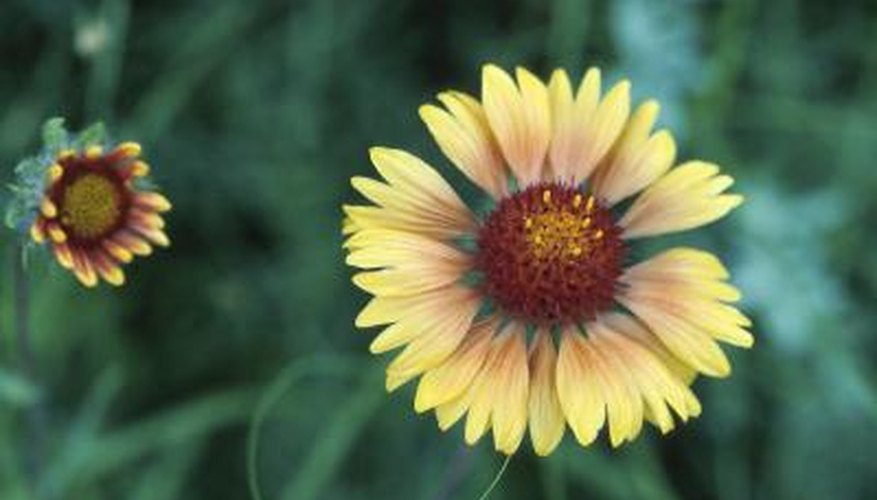Commonly called blanket flower, plants of the genus Gaillardia feature prominently in landscaping as a ground cover and border plant for their low-growing stature and summer display of large, daisy-like flowers. The genus is native to the Americas and works well in U.S. Department of Agriculture plant hardiness zones 5 to 11, including harsh seaside areas with salty air and dry, sandy soil. Like most sunflower relatives, blanket flower propagates from seed with little effort or care, and you can sow the seeds directly in the ground or in containers with equal success.
- Commonly called blanket flower, plants of the genus Gaillardia feature prominently in landscaping as a ground cover and border plant for their low-growing stature and summer display of large, daisy-like flowers.
- Like most sunflower relatives, blanket flower propagates from seed with little effort or care, and you can sow the seeds directly in the ground or in containers with equal success.
Gather seed from a mature Gaillardia flower in late summer once the head dries out. Separate the tiny, pointed seeds from the head and store them in a cool, dry place until spring.
Choose a bedding site suited to the needs of Gaillardia plants in spring once the soil thaws and reaches a temperature of 15.6 degrees Celsius. Select an area in full sun with well-draining soil and enough room to provide 1-square-foot of space for each plant.
Loosen the soil to a depth of 6 inches using a soil cultivator. Remove any weeds, large stones or debris that will interfere with the plants' development.
Saturate the soil in the bedding site using a garden hose with an adjustable nozzle set to soak or shower. Allow the water to drain away for a half hour or so.
Run a garden rake over the surface of the soil to create 1/8-inch deep furrows across the surface of the bed. Sprinkle the seeds in the furrows. Spread a thin layer of garden soil over the furrows to bury the seeds.
- Loosen the soil to a depth of 6 inches using a soil cultivator.
- Run a garden rake over the surface of the soil to create 1/8-inch deep furrows across the surface of the bed.
Water the Gaillardia seeds to settle them. Maintain even moisture in the bed so the seeds do not dry out during germination.
Watch for sprouting in 15 to 45 days. Thin the Gaillardia seedlings to one every 12 inches once they grow to 3 inches in height.
- Water the Gaillardia seeds to settle them.
- Thin the Gaillardia seedlings to one every 12 inches once they grow to 3 inches in height.
Gather seed from a mature Gaillardia plant as described in Step 1 of Section 1. Store the seed until late February or early March.
Prepare a growing pot for each Gaillardia plant desired. Fill 4-inch peat pots with a mix of 2 parts peat moss, 1 part garden soil and 1 part medium-grit sand. Place the peat pots on a slotted nursery tray to make handling them easier.
Pour 1/8 cup of water into each peat pot. Press the surface of the soil mixture with your fingertips to express the surplus water. Sow the Gaillardia seeds to a depth of 1/8 inch before the soil mixture dries.
- Pour 1/8 cup of water into each peat pot.
- Sow the Gaillardia seeds to a depth of 1/8 inch before the soil mixture dries.
Place the peat pots on a table or bench near a large, south-facing window. Shine a fluorescent lamp on the Gaillardia seeds if they are unable to receive at least eight hours of natural light per day.
Watch for germination in 15 to 45 days. Keep the Gaillardia seedlings well watered and warm while they develop mature leaves. Plant the peat pots in a sunny permanent bed after the last frost.
